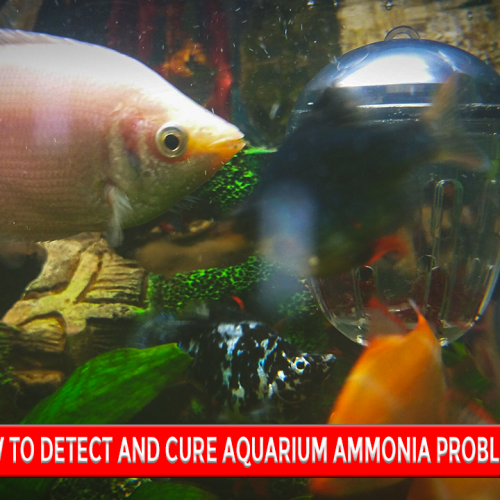Mollies rank high among the favorites due to their hardy features and beautiful colors in terms of aquarium fish. While one is a complete amateur in fish keeping or rather very experienced, learning some easy methods on how to care for mollies entails all their feeding, mating requirements, and suitable mate. This article covers information required on molly care for fish.
Feeding of Molly Fish
Nutrient and balanced diets are one of the main health factors as well as bringing out coloration in a molly fish. In feeding mollies, correct nutrients are through the following:
1. Types of Food
A type of fish called molly are omnivorous. Meaning they consume the two basic food groups plant and animal. A mollie, by consuming different things, tends to be in good shape and may contain the following:
- Flake Food: Good quality tropical fish flake food should make up most of their diet. Look for flakes that are highly proteinous and contain vitamins.
- Vegetables: You can supplement mollies with blanched spinach, lettuce, zucchini, and peas. These supply vital fiber and nutrients to them.
- Live or Frozen Foods: Provide them with live or frozen brine shrimp, daphnia, or bloodworms as a source of protein. This may help in building up their immunity and coloration.
- Algae Wafers: The mollies are natural grazers on algae, therefore the addition of algae wafers will add much to the diversity and simulate its original diet.
2. Frequency of Feeding
Feed the mollies two to three times a day, but never overfeed. Only feed the amount they can consume within two minutes to avoid the leftover food that could decay and cause water quality deterioration.
3. Avoid Overfeeding
Overfeeding is one of the significant causes of problems in home aquariums. It leads to dirty water, as well as obese fish and the swim bladder disease. Always take away the extra food after each feeding.
Breeding Molly Fish
Mollies are livebearers: they give live, swimming young instead of laying eggs. Breeding mollies, though not as challenging to a beginner as many, does require the satisfaction of some conditions before successful breeding happens.
1. Creating A Breeding Tank
 First off, should you start breeding mollies, best to set a breeding tank. The setup of breeding tanks should come with an adequate capacity:
First off, should you start breeding mollies, best to set a breeding tank. The setup of breeding tanks should come with an adequate capacity:
- Size of at Least 10 Gallons: This includes both accommodation for the pregnant female and fry for the young end.
- Plants and Hideaways: Give the fry some places to hide with either live or artificial plants. Adult mollies would eat them.
- Water Conditions: Keep a stable temperature range of 75°F – 80°F (24°C – 27°C) and pH that is slightly alkaline with a range of 7.5 – 8.5.
2. Identifying Pregnant Mollies
Female mollies have a visible gravid spot along the lower side of their abdomen, just in front of the anal fin, that darkens as they carry more fry. You may also observe a distended abdomen.
3. Fry care
Once the female mollie has delivered her brood, you should remove her from the breeding aquarium so that she does not eat them. The fry can be fed infusoria, newly hatched brine shrimp or crushed flake food till they become large enough to eat regular-sized food.
4. Breeding Interval
Mollies breed very often. She can deliver the baby after an interval of 30-40 days. Still, she requires some intervals between breeding for resting otherwise to suffer stress or health complications.
Tank Mate Selection for Molly Fish
Mollies are non-aggressive fish. In the aquarium, they amicably get along with other species of fish. However, a great deal of selection goes into choosing the right type of tank mates who may match their water requirement and also have the same temperate.
1. Tank Mate Compatibility
Mollies should be combined with species that enjoy the same conditions: slightly alkaline water and temperatures from 75°F to 80°F:
- Platies: Platies are another species of livebearers similar to mollies; therefore, they enjoy water the same way. The tranquil nature of platies makes them great tankmates.
- Swordtails: These are also livebearers, and swordtails will be a great choice due to their peaceful natures.
- Guppies: Guppies are small, colorful, and tolerance of water conditions is the same as mollies. They can add some liveliness to the tank.
- Corydoras Catfish: These bottom dwellers scavenge uneaten food and are peaceful enough to stay alongside mollies.
- Tetras: Neon tetras and black skirt tetras can be kept with mollies, considering that the tank could carry it and host all the fish easily.
2. Tank Mates to Avoid
Some fish are not appropriate to keep in the same tank with mollies either because of aggressive behaviour or significant differences in water demands:
- Cichlids: Most cichlids are aggressive, so they cannot be tank mates of mollies. Different types of water they require as well separate them.
- Betta Fish: Betta fish are notorious for territorial and may not get along well with the mollies
- Goldfish: Goldfish are preferred and well suit in cool temperatures; mollies love warmth.
Tank Setup
Keep the water conditions stable for your molly fish to be healthy and safe. Here’s how you can maintain an optimal environment:
1. Tank Size
A 20-gallon tank is ideal for mollies, especially for a small group or for adding other tank mates. For larger groups, it is advisable to use a 30-gallon or larger tank.
Use a good quality filter to maintain water quality. Mollies produce waste, and an efficient filter keeps the water clean and oxygenated.
3. Water Changes
Perform regular water changes (about 25% weekly) to maintain water quality. This helps keep the toxins like ammonia and nitrite from building up in the water.
4. Water Parameters
- Temperature: Keep the water temperature at 75°F to 80°F (24°C – 27°C).
- pH: Mollies prefer slightly alkaline water ranging from a pH of 7.5 to 8.5.
- Water Hardness: Mollies prefer to live in moderately hard or hard water.
Conclusion:
Molly fish are quite hardy and low maintenance, so any aquarist, be it beginner or advanced, can use them. Giving them a balanced diet, suitable breeding environment, and selecting compatible tank mates will ensure the health and happiness of your mollies. Stable water conditions and knowledge of their natural behavior will ensure that your aquarium thrives.
FAQs (frequently-asked questions)
Give them two to three feeding times a day, as much as they can only consume within two minutes
A female molly can spawn 20 to 100 fry in a single spawn, depending on their size and age.
Yes, the mollies could be safely kept in community tanks where their tank mates are docile and thrive under identical water conditions.
Even though mollies tolerate brackish water well, they do not need salt in their aquarium provided they are maintained under suitable freshwater conditions.




